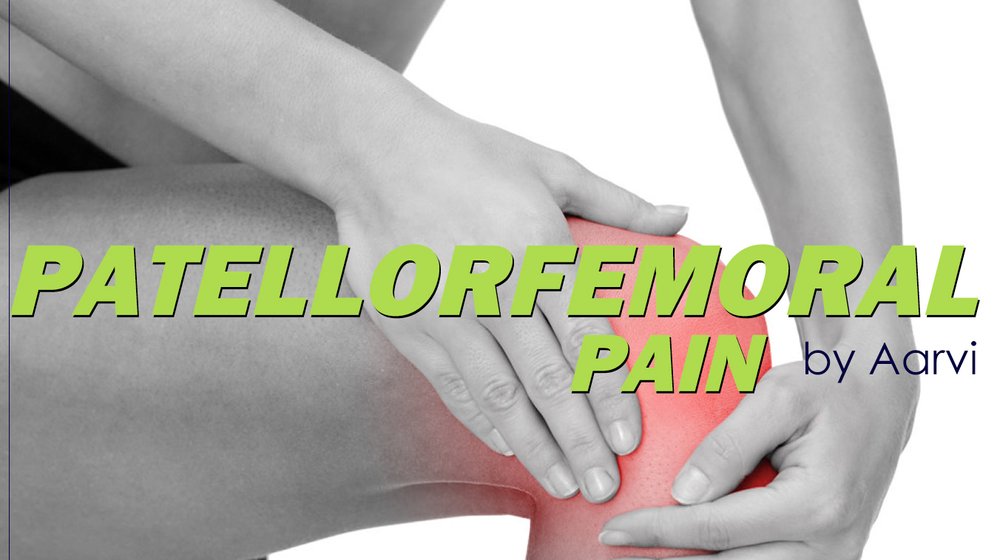First thing is first, what is patellofemoral pain syndrome (PFJPS) and what is the possible cause for anterior knee pain (front of knee pain).
It is used as an umbrella term for pain arising from the patellofemoral joint itself, or adjacent soft tissues. It is a chronic condition that tends to worsen with activities such as squatting, sitting, climbing stairs, and running.
The literature has shown there are multiple reasons causes –
- Problems with the alignment of the kneecap
- Overuse from vigorous activity
- Training load and surfaces are significant factors
- Younger female population without any structural changes due to “Q angle” (defined as the angle formed between the quadriceps muscles and the patella tendon). As females have a larger Q angle (the knees cave in) leading to patellar maltracking and dynamic knee overload.
HOW LONG DOES IT TAKE TO HEAL PATELLOFEMORAL SYNDROME?
This will depend person to person however you will be looking at anywhere from 4 to 6 weeks of rehabilitation and even more in some cases.
This will include reducing the load early whilst building the strength on the areas that are weakened. Then gradually return to load and progressively build up load so there’s increased tolerance and reduced chance of re-aggravation.
Coming back too soon can lead to a recurrence of the injury therefore a gradual return is best suited to get the maximum results.
WHAT EXERCISES ARE GOOD FOR PATELLOFEMORAL SYNDROME?
Well this will depend on each individual and the degree of their symptoms and load.
I will just give a general overview of the exercises, however a tailored approach is best for each person as it will address the patient’s specific impairments and functional limitations and achieve the patient’s specific goals.
Exercise programs with the inclusion of the lower extremity, and hip and trunk muscles work best in treating and reahabing PFPS
It is best to do a thorough assessment on the person and find where the biggest weakness lies and address that first and build from there. Commonly in the clinic it will be a weakness around the hip girdle and the glutes are the main muscles that are underfiring.

I commonly start with the Lock clams and some additional Glute exercises and building from there. (I have linked my 2 blog posts in the past explaining these exercises)
A common list of the exercises from literature states –
- Open kinetic chain exercises include straight leg raises (progress by adding ankle weights), short arc quadriceps strengthening, knee extensions, side-lying hip abduction, straight leg raise, and clamshells
- Closed kinetic chain exercises include wall sits, double and single-leg squats, lateral step-downs, and leg press
- Strengthening of the core and ankle musculature should be included if the patient exhibits deficits or imbalances in these areas
Research by Powers et al. (2014) found that particularly during the early stages of rehabilitation, patients may benefit from performing open kinetic chain exercises in deeper ranges of knee flexion (e.g., 50°–90°) and closed kinetic chain exercises in shallower ranges (e.g., 0°–45°) who added that patellofemoral joint contact force was less during quadriceps strengthening using a constant resistance knee extension machine compared to squatting at angles greater than approximately 45°.
Therefore initially start with the open kinetic chain movements that keep the knee bent more and closed chain exercises that do not cause too much knee bend.
SO DOES PATELLOFEMORAL PAIN GO AWAY?
Well once again it depends on the person and intensity of the pain. Sometimes it can disappear on its own. But I would not risk that if it has been persisting for a couple of months as leaving it can take longer for it to recover and can cause more damage especially if the weaknesses are not addressed. That can also lead to other injuries occurring and even increase wear and tear in the knee (osteoarthritis)!
Literature by Matthew et al. (2015) also states that early, appropriate rehabilitation may be critical to preventing poor outcomes and optimising function for individuals with PFP. Therefore we strongly recommend exercise therapy including hip and knee strengthening and stretching, to improve short, medium and long-term outcomes in individuals with PFP.
Although early days there is a possibility that exercise or movements will be ceased or reduced to protect the knee to decrease the chance of chronic pain from happening.
But once you’ve completed your rehabilitation you can return to your normal activities without the pain and dysfunction.
Good luck!
Aarvi Sandhu
References
Powers CM, Ho K-Y, Chen Y-J, et al. Patellofemoral Joint Stress During Weight-Bearing and Non—WeightBearing Quadriceps Exercises. J Orthop Sports Phys Ther 2014;44:320–7.
Capin, J. J., & Snyder-Mackler, L. (2018). The current management of patients with patellofemoral pain from the physical therapist’s perspective. Annals of joint, 3, 40. https://doi.org/10.21037/aoj.2018.04.11
Petersen, W., Ellermann, A., Gösele-Koppenburg, A., Best, R., Rembitzki, I. V., Brüggemann, G. P., & Liebau, C. (2014). Patellofemoral pain syndrome. Knee surgery, sports traumatology, arthroscopy : official journal of the ESSKA, 22(10), 2264–2274. https://doi.org/10.1007/s00167-013-2759-6
Matthews M, Rathleff MS, Claus A, et al. Can we predict the outcome for people with patellofemoral pain? A systematic review on prognostic factors and treatment effect modifiers. Br J Sports Med 2017;51:1650–60.

